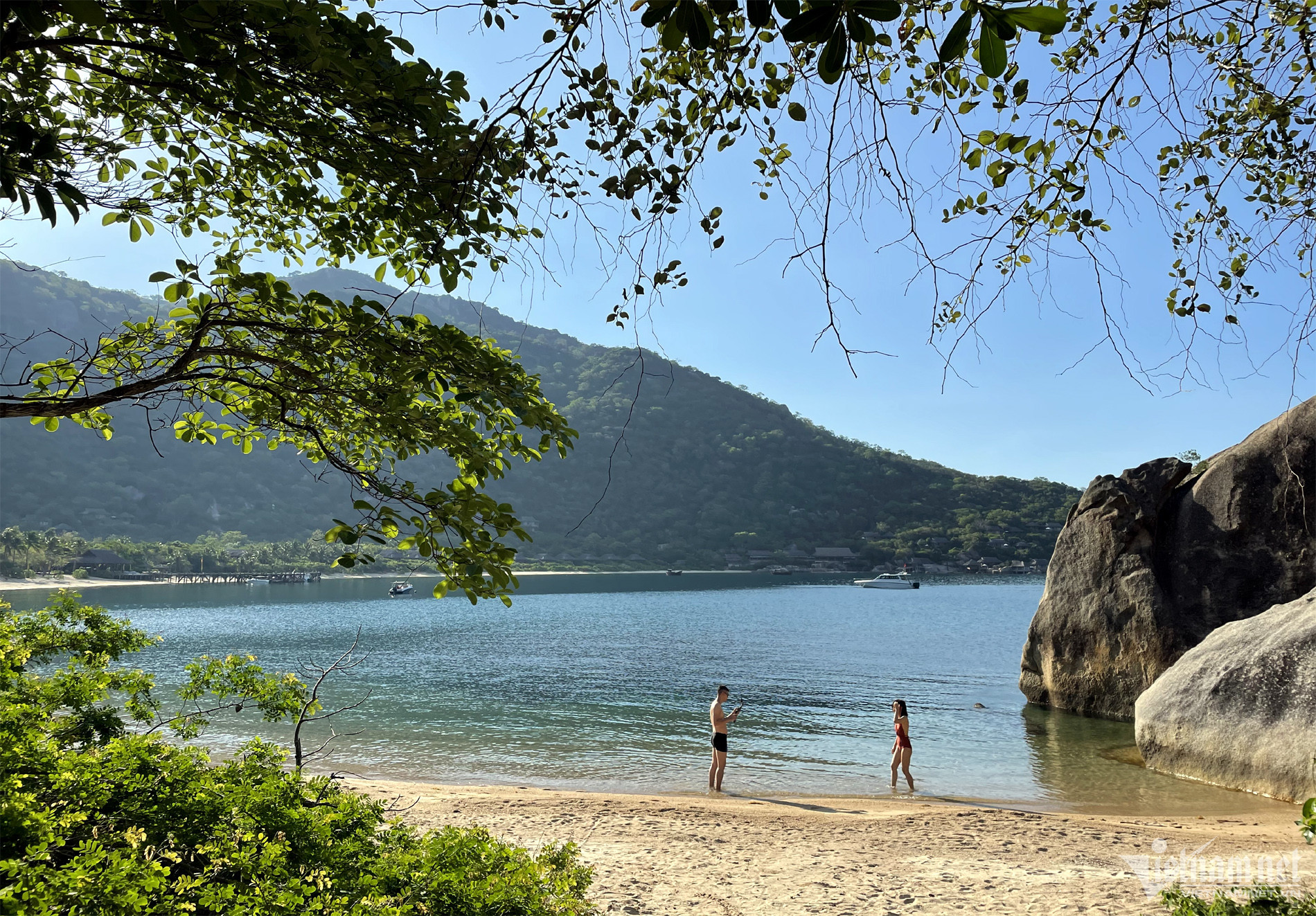
Following the local watchdog agency’s instructions and applying 70 criteria set up by Silk Sense Hoi An, plastic waste has not been seen at the resort since September 2023.
Ha Thi Dieu Vien of Silk Sense Hoi An said the resort faced three challenges during the transition process, namely workers, suppliers and tourists.
Since 80 percent of workers of the resort are locals, it was easy to persuade workers to commit not to discharge plastic waste. The workers also persuaded their family members to go green.
As for suppliers, the resort requested its partners not to bring plastic waste and to strictly observe the standards set by the resort.
Meanwhile, tourists have the right to enjoy a green environment, but they also have the responsibility of protecting the environment and complying with rules to keep the environment green.
At first, some guests felt uncomfortable observing the rules and did not think it was a must. But they are now more familiar with the rules: they don’t bring plastic, or if they do, they don’t discharge waste into the environment or they keep the products for reuse.
The resort classifies the remaining waste and orders environment companies to treat it.
Thanks to strict compliance to the rules, the number of disposable plastic bottles fell by 80,000 last year and the volume of plastic waste declined by 10 tons.
More importantly, guests have a good impression about their stay and remember the green atmosphere.
However, green tourism transition is a long process which requires patience.
Only 20 businesses have been granted certificates on green tourism that meet criteria on green tourism set by Quang Nam provincial authorities.
Hoi An needs more effort from other hotels and resorts, and the entire community to become a green destination.
Vo Tri Thanh, former head of the Central Institute of Economic Management (CIEM), Vietnam, kicked off the green process in many fields, from investment, consumption and policies to lifestyle and production, and tourism needs it the most.
Tourists now care about personal enjoyment, but they also want to contribute to sustainable development and environmental protection. Tourists are different from those in the past, with consumption behaviors changing.
Citing a survey conducted by Expedia Group in 2022, Thanh said 90 percent of tourists, especially youth and Gen Z, not only demanded green services but also wanted to contribute to environmental protection.
“They tend to choose sustainable tourism, especially tours with reduced environmental footprint which helps develop local culture and economy, and give them chances to discover new destinations,” Thanh said.
Patrick Harvemann, deputy chief representative of UNDP in Vietnam, said that Vietnam’s green tourism transition needs to focus on four factors: green planning, effective management of destinations, no-plastic waste and low-carbon tourism, and sustainable tourism in harmony with nature.
Thanh stressed that the green process needs the participation of all involved parties, especially tourists, businesses and the community in destinations.
Phung Quang Thang, deputy chair of the Vietnam Travel Association, said tourism greening is a long process which starts from small things and needs the cooperation of all people.
Regarding the challenges, Nguyen Anh Tuan, head of the Institute for Tourism Development Research, pointed out three problems – insufficient awareness of green growth and sustainable tourism development; lack of a reasonable policy to encourage green growth and detailed instructions; and financial capability and investment in green solutions.
Luong Thanh Nam, president and CEO of VietSolutions, which provides green solutions to hotels, commented that there is a big gap between the awareness of going green and actions. Many businesses have hesitated to go green because of limited financial conditions, especially after Covid-19.
Ngoc Ha